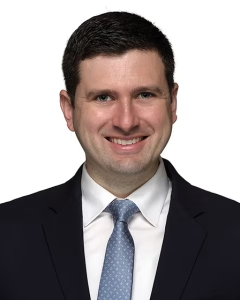 Back pain is among the more common conditions routinely seen in rheumatology practice, and the differential related to this and other spinal symptoms can be broad. Frequently, involving a spine specialist is of help in terms of a patient’s diagnosis and management. Jay Reidler, MD, MPH, is an adult and pediatric orthopedic spine surgeon with training that includes an adult and pediatric spine surgery fellowship at Och Spine New York-Presbyterian Hospital/Columbia University, a complex pediatric spine surgery fellowship at Shriners Hospital for Children, Philadelphia, and training in minimally invasive techniques for complex adult spinal conditions at the University of Pennsylvania.
Back pain is among the more common conditions routinely seen in rheumatology practice, and the differential related to this and other spinal symptoms can be broad. Frequently, involving a spine specialist is of help in terms of a patient’s diagnosis and management. Jay Reidler, MD, MPH, is an adult and pediatric orthopedic spine surgeon with training that includes an adult and pediatric spine surgery fellowship at Och Spine New York-Presbyterian Hospital/Columbia University, a complex pediatric spine surgery fellowship at Shriners Hospital for Children, Philadelphia, and training in minimally invasive techniques for complex adult spinal conditions at the University of Pennsylvania.
Dr. Reidler sat down with The Rheumatologist (TR) to discuss his insights on spinal care and his collaboration with rheumatologists.
TR: What are some similarities and differences in the training for, and the conditions treated by, orthopedic vs. neurosurgical spinal surgeons?
Dr. Reidler: There are two paths to becoming a spinal surgeon: one that begins with an orthopedics residency and one that is via a neurosurgery residency. For the orthopedist, a spine fellowship after residency is required, and this will focus entirely on spinal cases (as opposed to training for a neurosurgeon, which will include cases involving the brain and may or may not involve fellowship training beyond residency). Both types of surgeons may see many of the same conditions in clinical practice, and there is often an opportunity to train together (many of the fellowships that I completed were joint orthopedic/neurosurgical programs).
If there is an intra-dural process, this will fall in the purview of a neurosurgical spinal surgeon. All extra-dural spinal cases can be seen by either an orthopedic spine surgeon or a neurosurgical spine surgeon, and cases commonly seen by orthopedic spine surgeons include those involving spinal deformities, spondylolisthesis, and other structural issues. Orthopedic spine surgeons also may see more pediatric patients than do neurosurgical spine surgeons.
TR: What are the most common referrals you tend to receive from rheumatologists?
 Dr. Reidler: I often see patients referred for disc herniation, spinal stenosis, lumbar or cervical radiculopathy and scoliosis. I certainly collaborate with rheumatologists on challenging cases that may include inflammatory arthritides that involve the axial spine. For instance, I see a number of patients with spondyloarthritis, including radiographic and non-radiographic axial spondyloarthritis. I also see patients with cervical instability from a variety of causes, particularly patients with rheumatoid arthritis.
Dr. Reidler: I often see patients referred for disc herniation, spinal stenosis, lumbar or cervical radiculopathy and scoliosis. I certainly collaborate with rheumatologists on challenging cases that may include inflammatory arthritides that involve the axial spine. For instance, I see a number of patients with spondyloarthritis, including radiographic and non-radiographic axial spondyloarthritis. I also see patients with cervical instability from a variety of causes, particularly patients with rheumatoid arthritis.
TR: When you evaluate if a patient would likely have success with a surgical intervention, what factors do you consider important?

